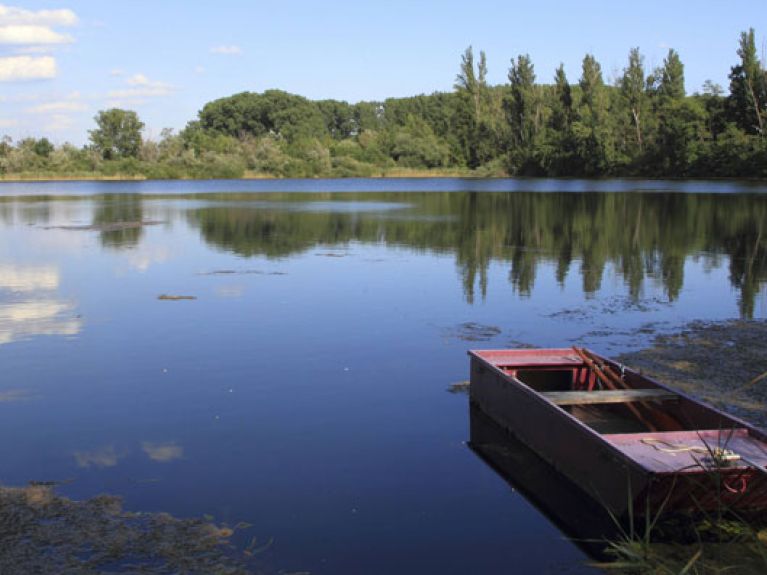The Upper Rhine Wetlands
The Upper Rhine is a biodiversity “hotspot”, especially the wetlands between Germany and France.

Gliding through the Taubergiessen wetlands in a traditional fishing boat past rare orchids, purple moor grass meadows and gadwalls gives one a sense of why this particular spot is so very special – here on the border between the densely populated industrialized nations of Germany and France. Taubergiessen in Baden-Württemberg is a world of its own. It forms part of the wetlands on both sides of the Rhine between Karlsruhe and Basel, which are certified as a Ramsar Site in line with the 1971 UNESCO Convention on account of their outstanding natural diversity. The Upper Rhine wetlands thus enjoy the same status as the Everglades in Florida and the Camargue in France. The sheer size of these wetlands in the heart of Central Europe means that they are deemed “unique”. They cover an area of 25,000 hectares on the German side and 22,400 hectares on the French side. The region between Germany and France, which extends all the way down to the Swiss city of Basel, is one of just ten trans-boundary Ramsar Sites in all.
Ramsar – the oldest international conservation agreement
Ramsar is not commonly known in Germany. People here are more familiar with categories like biosphere reserves, national parks and World Natural Heritage. Back in 1971, a “Convention on Wetlands of International Importance, especially as Waterfowl Habitat” was signed in the Iranian city of Ramsar. It is now the oldest and indeed one of the most important global conservation agreements. Germany signed up to the Ramsar Convention in 1976. The Convention was originally intended for the conservation and sustainable utilization of wetlands as a habitat for waterfowl. Its goals have been extended in recent years and now encompass the complete protection of wetlands as important ecosystems for the preservation of biodiversity, especially in view of future climate change. To date, 168 contractual parties worldwide have signed up to the Convention and have designated no fewer than 2,187 wetlands of international importance covering a total area of around 208.6 million hectares. In Germany there are 34 designated wetlands with a total area of some 868,000 hectares. The Upper Rhine wetlands, one of Europe’s largest groundwater reservoirs, was Germany’s latest conservation area to be included in the list in 2008.
World Wetlands Day on 2 February 2015
© www.deutschland.de

